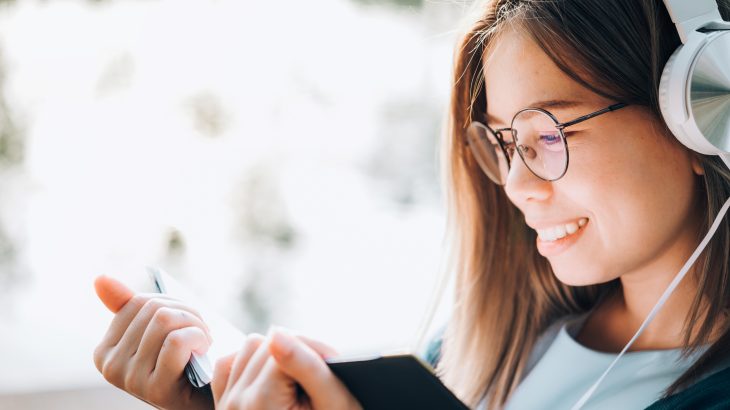Noise, loud or soft, effects learning environments, especially for neurodiverse students. These students may have especially acute hearing, hear outside the normal range of human hearing, or have trouble sorting background noise from what they need to pay attention to.
Loud Noise Can Be Problematic for Everyone
Loud noise can harm our hearing, whether it comes from our headphones or our environment. It turns out there’s research on average classroom noise level in the United States. Lily Wang and Laura Brill (2021) present research into sound levels in k-12 classrooms in the U.S.
As expected, the kindergarten through third-grade classrooms were louder when averaged over a full day than grades 4-12. Grades 3 and 8 experienced the most sound spikes over 65 dBA.
First, there’s good news that overall sound levels in U.S. classrooms tend to be within the safe range below 85 dBA. This, however, doesn’t tell the entire story. As we seek to make our classrooms more supportive of dyslexic students, one of Wang and Brill’s findings is especially important: the SNR, or signal-to-noise ratio.
Background Noise
When the base level of noise (background noise) is high, the audio signal that carries pertinent information (the teacher’s voice, for example) can be easily lost or misheard by dyslexic listeners. Tilde Van Hirtum, Pol Ghesquière, and Jan Wouters show why in the Journal of the Association for Research in Otolaryngology (2021). The challenge for a classroom teacher is to maintain a signal-to-noise ratio high enough for dyslexic students to understand the teacher’s voice or other presentation without exceeding safe total noise levels.
Dyslexic Listeners May Lose the Signal in the Noise
Van Hirtum, Ghesquière and Wouters (2021) measured at what signal-to-noise ratio (SNR) dyslexic students lose the signal in the noise. They compare this to when non-dyslexic listeners can no longer distinguish signal from noise. Dyslexic students lose ability to distinguish the teacher voice or presentation sooner than other students.
This means that even when most of the class can hear and understand the teacher, dyslexic students with normal hearing may hear the teacher speaking but be unable to distinguish the teacher’s words from the background noise. Dyslexic students are unlikely to understand why they are missing things. They certainly won’t self-advocate if everyone else seems to understand what’s going on.
Headphones Can Be Helpful When Background Noise is High
Thankfully the high school classroom teacher does not need expensive equipment to assess background noise and signal-to-noise ratio. OSHA provides an easy way to estimate background noise level: “If you need to raise your voice to speak to someone three feet away, noise levels might be over 85 decibels” (Occupational Safety and Health Administration, n.d.).
Signal-to-Noise Ratio
Since we know from Wang and Brill (2021) that background noise in US tends to be around 65 dBA, we need not be concerned about background noise unless the situation is unusual, such as a school near an airport. What we must address is the signal-to-noise ratio, thus making sure our dyslexic students can clearly hear what goes on in the classroom. That’s where headphones may play a part.
Headphones reduce the background noise, allowing students to listen to the informative voice at a lower, safer level. Rather than measuring noise levels, the teacher provides access and permission to use headphones and observes which students and how many students make use of the tool.
If observation suggests that students sense a need for a better signal-to-noise ratio, then more instruction can be moved to headphone-accessible media (audiobooks, teacher-recorded videos, etc.). The key for teachers is knowing that dyslexic students may lose the signal before the rest of the class, so the teacher can be alert to possible needs for headphone accessibility.
Headphone Safety
We now know that background noise above 85 dBA over time can cause hearing damage, and headphones can help with both background noise and signal-to-noise ratio, but headphones can also produce noise that’s too loud to be safe. Going over safe use of headphones with students is important.
Headphone Safety Guide for Students
· Make sure the volume on your headphones is turned down low enough that you can still hear what’s happening around you.
· The volume on your headphones should be set at 50-60% of max.
· If you have a safe listening feature on your headphones, or a smartphone app to monitor your sound exposure, please use it.
· Take breaks once per hour, to let your ears rest.
· Remove your headphones when the teacher speaks to the class. Even if you can hear the teacher with your headphones on, removing them signals that you are listening.
· Be considerate of others and of your ears. Ask the person sitting next to you if they can hear your headphones. If they can, turn them down.
· Use comfortable headphones that fit well, if possible.
· Invest in a good pair of headphones if you are able.
· Keep your headphones clean. Just give them a quick wipe-down every day.
· Label your headphones with your name and contact information.
· Never loan out your headphones to anyone. This keeps them clean and handy.
APA Citation: Graham, Y. (2024, May 29). How Background Noise Affects Dyslexic Students. Accessed at www.dyslexiakit.net on (date).
References
Kulawiak, P.R., & Schussler, D. (2021). Academic benefits of wearing noise-cancelling headphones during class for typically developing students and students with special needs: A scoping review. Cogent Education, 8(1). https://doi.org/10.1080/2331186X.2021.1957530.
Learning Headphones (2021, March 23). Headphones in Class Can be Brilliant: Here’s Why. Accessed at https://learningheadphones.com/blogs/school-headphone-blog/school-headphones-in-class-can-be-brilliant-here-s-why on April 19 2024.
Van Hirtum, T., Ghesquière, P., & Wouters, J. (2021). A Bridge over Troubled Listening: Improving Speech-in-Noise Perception by Children with Dyslexia. Journal of the Association for Research in Otolaryngology : JARO, 22(4), 465–480. https://doi.org/10.1007/s10162-021-00793-4
